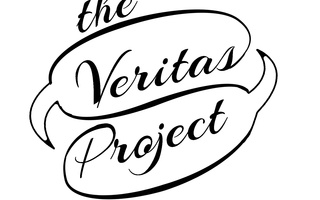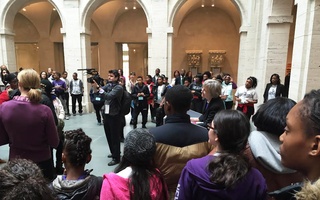There are lots of reasons to dislike New York City.
The summers are harsh (scorching), and the winters are harsh (freezing). There is a provincial team called the Yankees that occasionally inspires ill will. Plus no one seems to know for sure whether a family of alligators is living in the city’s sewer system.
However, there is one indisputable virtue that the Big Apple has, and that virtue is called Humans of New York.
For the uninitiated, Humans of New York, affectionately known as HONY by its more than 12 million Facebook followers, is a personal exercise in photojournalism that takes photographer Brandon Stanton across the city to ask provocative questions to strangers on the street. A few hours later, et voilà: the encounters are transcribed, edited, and uploaded.
While mustering the chutzpah to change from bond trader to street photographer is impressive enough, Stanton is most remarkable for the roughly Cuba-sized network that he has created. And in recent weeks, this virtual country has achieved an unprecedented feat.
On January 19, 2015, Stanton posted a quote in which Vidal Chastanet, a middle-school student, described the huge influence of his principal Nadia Lopez. The upload inspired a campaign to pay for three years of student trips from Mott Hall Bridges Academy, which is in one of the most dangerous areas of the city, to the Harvard campus.
From here, the numbers tell the rest of the story: one campaign, 50,000 contributors, and $1.4 million. It’s so much money that Stanton, who spoke at the IOP on Wednesday, February 11, has helped establish a yearly summer program and scholarship fund.
The HONY fundraiser reemphasizes an already emphasized fact: the Internet has redefined what activism means and what it can achieve. When else, and how else, could 67 words from a 13-year-old change so much?
Of course, HONY is not the only organization to leverage online activism. From the ALS Ice Bucket Challenge to #blacklivesmatter, various causes have swept across social media and varyingly called for money, political action, or basic awareness.
Let’s define this sort of action as crowd-sourced compassion. Such activism is public and communal, and both these attributes aid the effectiveness of the campaigns.
Publicity: by broadcasting your participation with this or that movement, you’re encouraging your friends into equal participation.
Community: a group such as HONY instills donors with the confidence that their money is building towards a concrete impact. In real time you can watch money pile up, and posted updates enure that your donation has aided in the creation of something beautiful.
However popular, these methods are not the only ways to give. More importantly, I’ve begun to wonder whether they’re the best ways to give.
Last Saturday, about a week after the HONY campaign ended, longtime basketball coach Dean Smith passed away. He left behind a reputation for quiet compassion, including the story of how he fought for desegregation in North Carolina.
Smith’s activism relied on neither publicity nor community. Here was the grand strategy: in 1964, without an announcement of any kind, he walked into a restaurant with a black friend and a local pastor. So began the slow death of segregation in Chapel Hill.
Read more in Opinion
Law Students Stand Behind Robin SteinbergRecommended Articles
-
Why Now? Why Divestment?Divestment became the hot political issue at campuses all over the country this spring. Several hundred students at Columbia blocked
-
SNCCAt a Student Non-Violent Coordinating Committee gathering in May, 1966, newly elected chairman Stokely Carmichael announced: A fundamental change has
-
PERRY SPEAKS ON LIBERALISM IDEASWilliam James's two fundamental beliefs pertaining to liberalism were the doctrines of heroic activism and the satisfaction of demand, according
-
 Let's Be Real: The Veritas Project
Let's Be Real: The Veritas Project -
 Mott Hall Bridges Academy Visited Harvard
Mott Hall Bridges Academy Visited Harvard













